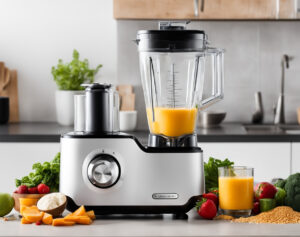Are you tired of bland, tasteless dishes and ready to elevate your culinary game? Or perhaps you’re a health-conscious home cook searching for low-sugar and low-alcohol alternatives in your cooking? Look no further, because understanding the flavor profiles and characteristics of dry red wine for cooking can take your culinary skills to the next level.
As a seasoned chef and wine enthusiast, I have spent years experimenting with different types of wine in my cooking. In this article, I will share my top picks and tips for using dry red wine in your dishes, including the best varietals to use and how to pair them with different types of cuisine.
By the end of this post, you’ll have a better understanding of What is Dry Red Wine for Cooking, how to use and how it can enhance the taste of your dishes. So, whether you’re a food blogger, home cook, or just someone interested in learning more about wine in cooking, keep reading to discover more.
What is Dry Red Wine for Cooking?

A dry red wine is a type of wine that has little to no residual sugar, resulting in a less sweet, more savory taste. This lack of sweetness is due to the fermentation process, where the yeast consumes the sugar in the grapes, converting it into alcohol.
What Makes a Wine Dry?
A wine is considered dry when it has a low residual sugar content, typically less than 1%. This dryness is achieved by allowing the fermentation process to continue until almost all the sugar in the grapes has been converted into alcohol.
What is the Difference Between Dry and Sweet Wines?
The main difference between dry and sweet wines is the amount of residual sugar. Dry wines have lower sugar levels, resulting in a less sweet, more savory flavor profile. Sweet wines, on the other hand, have higher sugar levels and a sweeter taste.
Why Use Dry Red Wine for Cooking?
Dry red wine is an excellent choice for cooking because it can add depth, richness, and complexity to dishes without overpowering them with sweetness. Additionally, its acidity can help to balance and enhance flavors in a dish, making it a versatile ingredient in various recipes.
The Best Dry Red Wines for Cooking
When it comes to cooking, not all dry red wines are created equal. Here are some of the best varieties to use in your dishes, along with their flavor profiles and food pairings:
- Cabernet Sauvignon: A full-bodied wine with bold flavors and high tannins, making it a great choice for hearty dishes like beef, lamb, or stews.
- Pinot Noir: A medium-bodied wine with earthy, fruity flavors and low tannins, making it ideal for dishes with mushrooms, chicken, or pork.
- Malbec: A full-bodied wine with rich, fruity flavors and moderate tannins, making it suitable for dishes with red meat, tomato-based sauces, or grilled vegetables.
- Cabernet Franc: A medium-bodied wine with herbal, fruity flavors and low tannins, making it a versatile choice for a variety of dishes, including fish, poultry, or pasta.
- Tempranillo: A medium-bodied wine with earthy, spicy flavors and moderate tannins, making it a great option for dishes with lamb, pork, or tomato-based sauces.
- Mataro: A full-bodied wine with bold, fruity flavors and high tannins, making it ideal for rich, flavorful dishes like braises, stews, or grilled meats.
Tip: When choosing a dry red wine for cooking, consider the flavors in the dish you are making and select a wine with complementary flavors and acidity levels. Also, avoid wines with strong flavors or high tannins, as these can overpower your dish.
How to Use Dry Red Wine in Cooking?
To use dry red wine in cooking, choose a wine with a complementary flavor profile and acidity level for your dish. Incorporate the wine using various techniques, such as deglazing, braising, marinating, creating reduction sauces, or poaching. Ensure you use a quality wine that you would enjoy drinking, as the flavors will become more concentrated during the cooking process.
Substituting Dry Red Wine in Cooking
If you’re in a pinch and don’t have any dry red wine on hand, don’t worry – there are some suitable substitutes you can use in your recipes:
- Non-alcoholic red wine: A good option for those looking to avoid alcohol in their cooking.
- Red wine vinegar: A tangy alternative with a similar acidity level, but use sparingly and dilute with water to tone down the intensity.
- Beef or vegetable broth: A savory substitute that can add depth and richness to your dish, but may lack the acidity and complexity of wine.
Tip: When substituting dry red wine in cooking, keep in mind the flavors and acidity levels of your chosen substitute, and adjust your recipe accordingly.
Cooking Techniques with Dry Red Wine
Incorporating dry red wine into your cooking is easy and can be done using various methods. Here are some techniques and tips for enhancing flavors with dry red wine:
- Deglazing: After sautéing meat or vegetables, add a splash of dry red wine to the hot pan to loosen any flavorful bits stuck to the bottom. Simmer and reduce the wine, then use it as a base for sauces, gravies, or stews.
- Braising: Combine dry red wine with stock, herbs, and aromatics to create a flavorful braising liquid for slow-cooked meats and vegetables. The wine adds depth and complexity to the dish as it tenderizes and infuses the ingredients with flavor.
- Marinating: Use dry red wine as a base for marinades to tenderize and flavor meats, poultry, or vegetables. Combine the wine with olive oil, herbs, and spices, and marinate your ingredients for a few hours or overnight for maximum flavor.
- Reduction sauces: Simmer dry red wine with other ingredients, such as stock, shallots, or herbs, to create a concentrated and flavorful sauce. Reduce the mixture until it reaches the desired consistency and serve it over meats, poultry, or pasta.
- Poaching: Gently cook fruits, such as pears or plums, in a mixture of dry red wine, sugar, and spices for a flavorful and elegant dessert.
Tip: When cooking with dry red wine, always use a wine that you would enjoy drinking, as the flavors will become more concentrated during the cooking process.
Benefits of Cooking with Dry Red Wine
In addition to enhancing the taste of your dishes, cooking with dry red wine offers several benefits:
- Adds depth, richness, and complexity to dishes.
- Balances and enhances flavors due to its acidity.
- Tenderizes meats, making them more succulent and flavorful.
- Can create visually appealing and vibrant sauces and glazes.
Tips for Choosing and Using Dry Red Wine in Cooking
To get the most out of cooking with dry red wine, consider the following tips:
- Select a wine with a flavor profile that complements the dish you are making.
- Choose a wine with low tannins and high acidity for better balance and versatility.
- Opt for a quality wine within your budget, but avoid using subpar or “cooking wines” from the grocery store, as these can negatively affect the taste of your dish.
- Store any leftover wine in a cool, dark place, and use it within a few days for optimal freshness and flavor.
Final Thoughts
Incorporating dry red wine into your cooking can elevate the flavors and richness of your dishes, making them more satisfying and enjoyable. By understanding the characteristics of different dry red wines and how to use them in various cooking techniques, you can confidently enhance your culinary skills and impress your friends and family with delicious, wine-infused dishes. So go ahead, explore the world of dry red wine, and let your creativity shine in the kitchen!
FAQs About Dry Red Cooking Wine
What is the best red wine to cook beef with?
If you’re cooking beef, the best red wine to use is Cabernet Sauvignon or Pinot Noir. Merlot is also a good option for beef dishes. If you’re making beef stew, Pinot Noir is a great choice. Cabernet Sauvignon is also a good option for beef stew as it pairs well with the hearty flavors of the dish.
When a recipe calls for red wine what should I use?
When a recipe calls for red wine, you can use any dry red wine that you would enjoy drinking. Some good choices include Cabernet Sauvignon, Merlot, and Zinfandel. Avoid using cooking red wine, as it has a strong, salty flavor that can be overpowering in dishes.
Here are some tips for using red wine in cooking:
1. Use a dry red wine that you would enjoy drinking. The flavor of the wine will be more pronounced when it is cooked, so you want to use a wine that you like the taste of.
2. Don’t overcook the wine. When wine is cooked for too long, it can become bitter.
3. Add the wine to the dish at the end of cooking. This will help to preserve the wine’s flavor.
Is dry red wine same as cooking red wine?
No, dry red wine is not the same as cooking red wine. Dry red wine is a type of wine that has had all of its residual sugar removed, while cooking red wine is a type of wine that has been fortified with salt and other preservatives to make it last longer. Cooking red wine is not intended to be drunk, and it can have a strong, salty flavor when used in cooking. Dry red wine, on the other hand, is a good choice for cooking because it has a more delicate flavor and can add depth and complexity to dishes.





